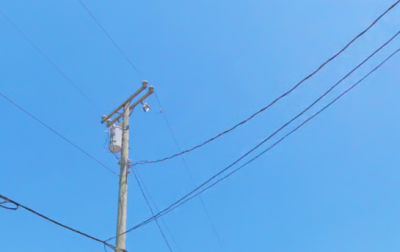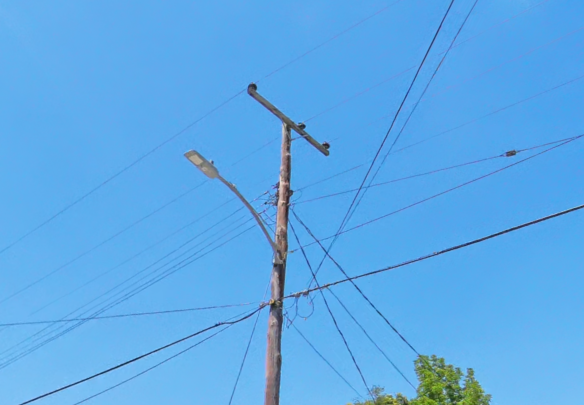Article contributed by Michael Naber, Simerse AI
Introduction
The way utilities manage assets is changing rapidly thanks to mobile mapping technology, enhanced by new artificial intelligence (AI) models. This advancement, involving 360-degree cameras mounted on vehicles, streamlines the monitoring of extensive utility distribution infrastructure such as poles and pole inventory with increased accuracy and efficiency.
Understanding Mobile Mapping
Mobile mapping systems essentially are vehicles fitted with 360-degree cameras and sensors to collect detailed data from street-level. These systems drive through areas capturing high-resolution panoramic images of utility poles and other infrastructure. New deep learned-based AI algorithms analyze these images to extract inventory and create accurate digital maps. This process can significantly outperform traditional survey methods on both speed and cost.
AI and Mobile Mapping Go Together
AI plays a crucial role in mobile mapping by automating the analysis of large datasets collected by 360-degree cameras. Rather than a person manually extracting these features, the AI models quickly identify key equipment like poles, transformers, fuses, and other components. This rapid processing is vital in time-urgent scenarios, such as assessing storm damage, but also has a compelling value proposition for traditional asset inventory operations.

The Advantages of 360-Degree Cameras
Equipped on mobile mapping vehicles, 360-degree cameras capture panoramic views that encompass a full view of the surrounding infrastructure. This capability is particularly important for utilities as power lines often parallel and cross over roads. Even better, these panoramic images can be reused for adjacent purposes, such as telecom attachment analysis.
Transforming Images into Asset Inventory
Recent advancements in AI capabilities enable these systems to convert detailed panoramic images into asset inventory. Software and AI can accurately place these assets on digital maps, simplifying asset management and integration into Geographic Information Systems (GIS). By combining asset inventory data with digital maps, we can help utilities stay up to date with their infrastructure.
Using Panoramic Images for Digital Inspections
Increasingly, utilities are turning to digital inspections to help monitor the condition of their infrastructure. Digital inspections leverage the benefits of mobile mapping, namely high-resolution panoramic images, to enable utilities to review asset condition from an office workspace rather than out in the field.

Why Prefer Vehicles Over Drones or Manual Surveys?
Vehicles with 360-degree cameras often provide a closer more detailed image than drones, especially in densely populated or urban areas where drone use can be restricted. Additionally, using vehicles reduces the need for manual foot-based surveys. Here are several advantages of vehicle-based mobile mapping:
- Quality and Clarity: Vehicle-mounted cameras are generally closer to the infrastructure, providing clarity. This benefit is compounded when vegetation or trees can block aerial views of utility infrastructure.
- Accessibility: Vehicles can easily access urban and street-adjacent environments where drone flights are often restricted.
- Safety and Efficiency: Reducing manual fieldwork decreases risks from walking near roads while also increasing the speed of data collection.
Challenges in Mobile Mapping
Despite its benefits, mobile mapping with 360-degree cameras also faces some challenges that must be considered depending on your operational goals:
- Data Management: The large volumes of data generated require robust storage solutions and scalable processing capabilities.
- Environmental Limitations: Geographic and environmental barriers can limit where vehicles can map.
- Remote Access: Accessing utility equipment located off public roads still presents logistical challenges, although the efficiency and coverage in accessible areas are significantly improved. Often a hybrid approach of traditional surveys and mobile mapping can help here.
Emerging Use Cases Beyond Utility Infrastructure
Beyond utility infrastructure, mobile mapping AI has multiple applications across adjacent use cases such as traffic, telecom, and public works:
- For traffic assets, mobile mapping systems can be used to locate the presence and condition of traffic signage and road pavement.
- For telecom assets, mobile mapping systems can help accelerate digital inspections of joint-use attachments.
- For public works, mobile mapping can help identify street-level assets such as benches, ramps, curbs, sidewalks, and other key infrastructure.
Looking Forward
The outlook of mobile mapping is bright. Ongoing advancements in AI and computing power are expected to further enhance the speed and efficiency of data processing. As technology evolves, we anticipate more sophisticated camera technologies and innovative applications to emerge, pushing the capabilities of mobile mapping further.

Michael Naber is the CEO of Simerse AI, a technology company developing AI models and software for mobile mapping.






